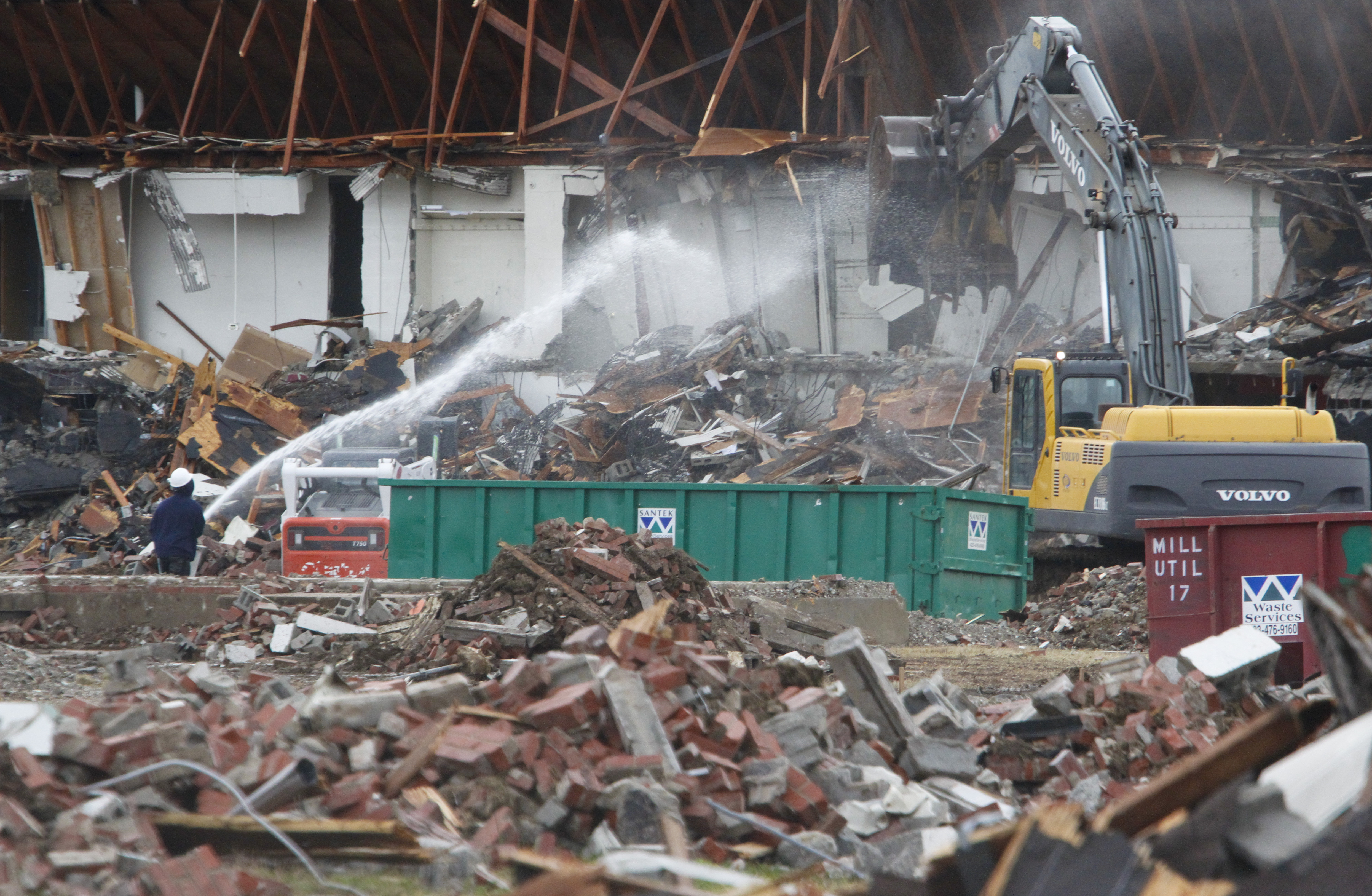THE JOBS FACTORHundreds of East Chattanooga residents applied for demolition jobs on the Tubman project, which promised living-wage jobs to a neighborhood where people needed work.A total of 14 East Chattanooga residents were hired as laborers by the demolition contractor, Environmental Abatement of Henderson, Tenn. The workers were paid $18.75 an hour.Two later quit and four were fired because they failed to make daily production goals, said James McKissic, director of Chattanooga's Department of Multicultural Affairs.He said city officials pulled from the hundreds of East Chattanooga applicants to replace those six workers.Environmental Abatement also hired three East Chattanooga residents for specialized work such as heavy equipment operators. One of them also quit, McKissic said.FAST FACTThe destruction of Tubman's 440 units plus the 188 units demolished at Maurice Poss Homes in 2005 represent more than 600 units of public housing torn downd in Chattanooga in less than 10 years.
Half the buildings at the former Harriet Tubman public housing development - home to generations of Chattanooga's poor - are gone now.
And an iron claw is crushing through the brick structures that still stand.
A stream of water is used to reduce the dust particles in the air.
East Chattanooga community advocate Patrick Kellogg watched from across the street this week as the city's second-largest public housing site went down via the wrecking ball.
The loss of Tubman is another step in the dismantling of traditional public housing in Chattanooga and across the nation. But if a city plan comes to fruition, the Tubman land on Roanoke Avenue on the city's east side will take on new purpose as the home of a company that could offer living-wage jobs and a means to better lives.
Kellogg has a more immediate worry.
He is concerned for the 400 low-income families who once lived at Tubman, but he also worries about what the demolition work might be releasing into the air.
Nearly 40 East Chattanooga residents have signed a petition asking the city to order independent environmental testing for airborne contaminants -- specifically asbestos.
"We want to get independent confirmation that the dust coming from the bulldozer hitting those buildings, if that dust has or does not have asbestos in it," said Kellogg. "The construction documents indicated that every one of those buildings had at least one contamination source of asbestos. A lot of them had multiple."
About half the 72 buildings at Tubman have been demolished to the foundations. The other half is expected to be down to the foundations by January. Total demolition with all brick and rubble cleared is expected to be complete by mid-March.
Homes built before the 1970s often employed products containing asbestos because of its resistance to heat and corrosion. Tubman first opened in 1953.
Asbestos was used in insulation, plumbing, paint, wall joint compound and other building materials. However, its use has been strictly regulated since it was linked to illnesses including mesothelioma and lung cancer.
But the fibers are not considered a threat until they are released into the air.
Assistant City Engineer Dennis Malone said the city already contracts with an independent environmental consulting firm and that the company -- S&ME, an East Coast firm with an office in Chattanooga -- studied the Tubman buildings, made recommendations about abatement, drew up a plan for asbestos removal and approved the contractor's demolition plan.
Since then, S&ME has monitored the work and found no cause for concern about asbestos, Malone said.
Lacie Stone, the city's director of communications, said the $4.3 million Tubman demolition contract was awarded to Environmental Abatement, a Henderson, Tenn.-based company, because of its experience with asbestos abatement.
In its bid for the work, Environmental Abatement indicated that it is also doing asbestos, hazard mitigation and demolition for Tennessee Department of Transportation, PBG Builders Inc., in Nashville and a private owner in Murfreesboro.
Malone said asbestos abatement was performed at each building before demolition began. He emphasized that no building was demolished before the contamination was abated.
Maggie Taylor, who lives about a block from the Tubman site and was among the 37 residents who signed the petition, said she no longer sits out on her front porch during active demolition because of her concerns.
She said her nose runs when she sits outside and she believes dust from the site is getting into her sinuses.
Kellogg started the petition after noticing dust in the air during the demolition and submitted the signatures to the City Council clerk's office this month.
He said he wanted to "sound the alarm" about possible contaminants in the air.
And despite the city's assurances, he thinks an environmental consultant not associated with the city still needs to conduct an assessment.
Contact staff writer Yolanda Putman at yputman@timesfreepress.com or 757-6431.

